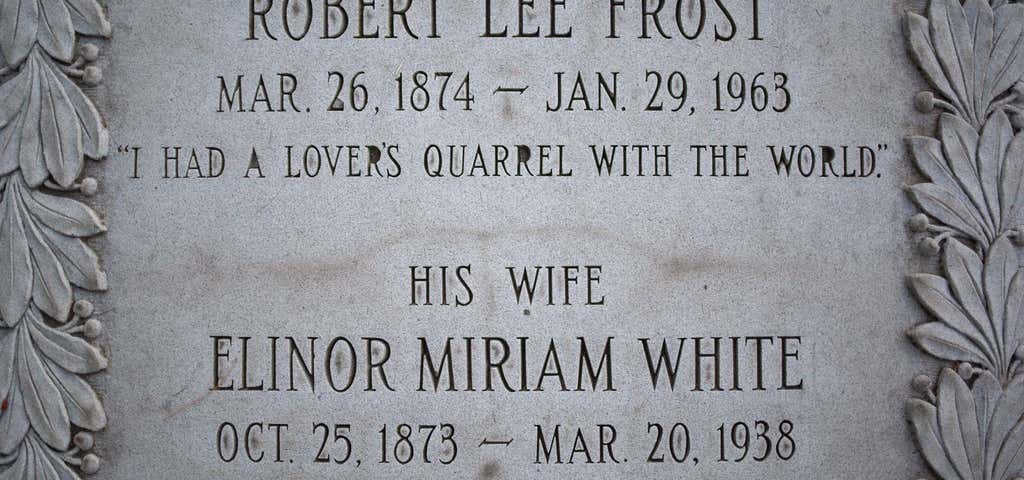Cemeteries may be cities of the dead, but they’re constructed by—and for—the living. Historic burial grounds can be found almost anywhere you go in the U.S., and they often function as open-air art galleries showcasing intricate stone carvings, beautiful typography, and thought-provoking symbolism. Before people flocked to parks, cemeteries—with their manicured grounds and quiet long-term tenants—were the preferred place to go for a peaceful picnic or Sunday stroll.
Founded in 1638, Old Burial Hill Cemetery is located just south of Salem in Marblehead, Massachusetts. Old Burial Hill, which served as a filming location for the 1993 Halloween classic Hocus Pocus, is one of the oldest cemeteries in the U.S. It sits, very literally, on top of a hill with breathtaking harbor views. The intricate stone carvings of winged cherubs, skulls and crossbones, and other macabre symbols are remarkably preserved.
Eastern Cemetery
Established in 1668, Eastern Cemetery is the oldest historic site in Portland, Maine. Of the more than 4,000 marked graves, the oldest headstone belongs to Mary Green, who died at age 54 in 1717. Eastern Cemetery’s beautiful, sloping 6.5-acre grounds are full of excellently preserved, intricately carved tombstones topped with grinning skulls, crossbones, and winged cherubs. Since 2006, the cemetery has been maintained by Spirits Alive, a non-profit organization dedicated to the protection and preservation of the burial ground.
At the center of the Old Bennington Historic District, West Main Street (aka Route 9) curves nearly 180 degrees, cradling the Old First Church and the oldest burying ground in the state of Vermont, Bennington Centre Cemetery. New England cemeteries are full of excellent examples of death imagery—from winged skulls, cherubs, and hourglasses to crossbones and draped urns. But if cemeteries are outdoor art galleries, Bennington Centre Cemetery—featuring the work of noted stone carvers including Ebenezer Soule, Josiah Manning, and Zerubbabel Collins—is the macabre Metropolitan Museum of Art.
Hartsdale Pet Cemetery
This 5-acre cemetery, located about 25 miles north of New York City, is the final resting place of more than 70,000 pets. Although the wrought-iron entrance gate reads “Hartsdale Canine Cemetery,” any and all animals are accepted at Hartsdale, the first pet cemetery in the U.S. The majority of burials are still dogs and cats, but Hartsdale has also interred rabbits, ferrets, snakes, turtles, guinea pigs, horses, lizards, rabbits, monkeys, and even humans. Nearly 700 people—or more specifically, their cremated remains—are buried alongside their pets.
Historic Congressional Cemetery
Historic Congressional Cemetery may have been the first national burying ground in the U.S.—predating Arlington by at least 50 years—but today it is full of life. Located just a few miles east of the National Mall in Washington, D.C., the cemetery is the final resting place of countless notable and historical figures, including congressmen and gay veterans. But depending on when you visit, you may also encounter dogs darting in between the headstones and find goats grazing in the grass or doing yoga.
The first interment at Spring Grove occurred on September 1, 1845. In 1987, the cemetery—the third largest in the U.S.—officially changed its name to Spring Grove Cemetery and Arboretum. Today, its 733 acres are populated with an extensive collection of native and exotic flora, including at least 500 species of woody plants and 1,000 trees, shrubs, annuals, and perennials labeled for research purposes.
Key Underwood Coon Dog Cemetery
The Key Underwood Coon Dog Memorial graveyard is located, appropriately, on Coon Dog Cemetery Road in the northwest corner of Alabama. It was established in 1937 and claims to be the only cemetery of its kind in the world. You can still pay your respects to the cemetery’s first resident, Troop, Key Underwood's faithful hunting companion for more than 15 years. Today more than 300 dogs are buried in the cemetery and all potential candidates must meet a set of strict qualifications.
St. Louis Cemetery No.1 is the oldest and most famous of the three St. Louis Roman Catholic cemeteries in New Orleans. The small, compact cemetery opened in 1798, and houses thousands of permanent residents in just one square block. Notable residents include voodoo priestess Marie Laveau and the notorious Delphine LaLaurie. Nicholas Cage has already purchased a mausoleum for himself—a stark, white pyramid, that is frequently covered in lipstick kisses.
Boot Hill Cemetery
High on a hill, to the north of Daylight Gulch is one of Virginia City's most popular tourist attractions. Boot Hill Cemetery is the last resting place of five infamous road agents hanged by vigilantes on January 14, 1864. The cemetery is also the final resting place of three “rodent agents.” According to their hand painted grave markers, “Sneaky Mouse” was captured and killed for loitering and stealing cheese. “Sqeeky Mouse” was captured and killed for leaving messes and crawling up ladies’ dresses. And “Cheeky Mouse” was captured and killed for moving into cabins, vagrancy, and tearing up books.
Among the cemetery’s many famous permanent residents is actress Judy Garland, actor Rudolph Valentino, voice actor Mel Blanc, musician Johnny Ramone, and actress Maila Nurmi. Even Toto, Dorothy’s sidekick in The Wizard of the Oz, is properly memorialized at Hollywood Forever. A granite monument was erected on the grounds for Toto (whose real name was Terry), though the actual dog has been interred for more than half a century in nearby Studio City.
Vallecito County Park
Surrounded by sacred Kumeyaay tribe land on one side and the rugged Anza-Borrego Desert State Park on the other, the 71-acre Vallecito County Park is hardly more than a blip on the map in Southern California’s expansive desert. In a corner of the campground, on a small hill overlooking the surrounding desert and marshland, three graves sit in a solemn row. Enclosed by a red picket fence, the tiny cemetery is the final resting place of “the Lady in White,” who allegedly still haunts the campground.
Roadtrippers
Roadtrippers helps you find the most epic destinations and detours—from roadside attractions to natural wonders and beyond.
Explore More Trip Guides
A Highway 1 road trip along California’s Central Coast
- 14 Places
- 02:49
- 99 mi
Route 66 Leg 2: St. Louis to Tulsa
- 61 Places
- 18:31
- 876 mi
Route 66 Leg 1: Chicago to St. Louis
- 71 Places
- 16:31
- 636 mi
Route 66 Leg 3: Tulsa to Amarillo
- 94 Places
- 18:36
- 867 mi













